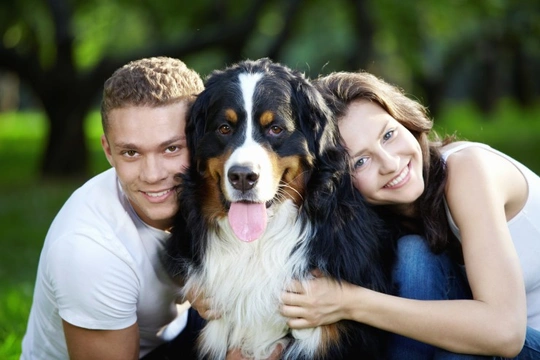
Can dogs tell men and women apart?
Whilst dogs and people are both mammals and in the wider scheme of things, actually have more in common than apart, dogs and humans are very different in terms of how they gather information about the world around them, process this information, and use it in real-world terms.
Much like people, dogs take in a constant stream of information about what is going on around them using all of their senses, unconsciously processing the input they get from the world and translating it into terms that they understand and can use. Dogs are adept at telling different individual people apart from each other, and soon learn who is likely to offer them a biscuit or give them some fuss, and who isn’t likely to pay out with a reward if approached!
Dog owners often wonder about what dogs actually know and understand about people and how they develop the information that they use, and one of the most common questions asked in this regard is whether or not dogs can tell men from women – and how.
In this article we will explain how dogs tell men and women apart, what this information means to them, and how their preferences inform interactions with others. Read on to learn more.
Scent
First of all, as you might expect it is the dog’s sense of smell that is their most powerful tool when it comes to telling men and women apart, and how they do this and what scent tells your dog is very complex and detailed.
There is much more to scent recognition by gender for dogs than identifying the smell of aftershave versus a perfume – and in fact, strong artificial scents like this can overpower other scents and serve to confuse a dog rather than indicating male or female traits.
It is actually our own natural scents that dogs pick up on to tell men and women apart – and we each have our own unique scent signature underlying any other scents we might use or come into contact with, which provide a rich stream of information for dogs.
Pheromones, hormones and even what we eat – and if we are healthy or not – all contribute to this unique scent, which is markedly different in men versus women.
Our own unique scents also change subtly on a day to day basis, but the core underlying gender identifier that comes from our hormone and pheromones remain very clear to dogs.
Visual appearance
Men and women have different core appearance traits, which allow dogs to build up a clearer picture of gender identity. Both the body shape and build and facial structure of men and women differ, with women tending to be slightly shorter, with wider hips and narrower waists and shoulders than men.
Our face shapes differ too, particularly in the forehead and jaw, and even things like facial hair on men and makeup on women that serve to change or accentuate the appearance of certain traits all add pointers to your dog.
Sounds
Male and female voices have different tones, pitches and timbres, and even though there is a huge range of variance between any two female or male voices, dogs can tell gender just from voice alone. Just as we can tell a female voice from a male voice correctly almost all of the time, so too can dogs – and this has been borne out by research.
Dogs were presented with a man and a woman and then played voice recordings of a male and a female voice (to ensure that the dog responded to the voice alone and not the specific speaker) and reliably looked to the person of the appropriate gender for the voice they heard.
Gender correlations
Dogs reliably tell men and women apart instantly, but this doesn’t mean that they won’t occasionally get confused! For instance, certain appearance traits that we tend to associate with one gender (like being very tall, which we tend to find more in men) also help to inform a dog’s deductions, although the scent messages underlying it all bear out or negate the physical trait very effectively.
A person who is undergoing hormone treatment or that is taking medications that change the body’s levels of testosterone or progesterone might confuse a dog, causing them to pick up mixed or conflicting signals on gender.
Gender preferences in dogs
Some dogs tend to get on better with people who are male rather than female or vice versa, and there are a range of reasons for this. If the dog lives with just one person and so, forms a strong bond with them, they are likely to show a preference for people of that same gender. This can also happen if the dog lives with more than one person but one person provides most of their care.
Additionally, if a dog has had a bad experience with either a specific man or woman, they may be more wary of people of that same gender in future, although a strong reaction of this type is quite unusual, as most dogs are exposed to neutral men and women regularly every day.



